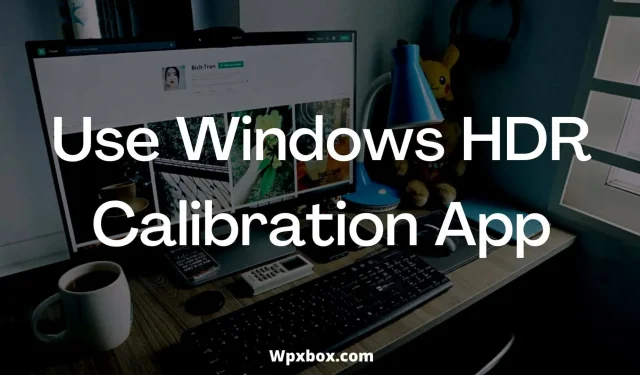If you are using an HDR capable monitor, you may not be getting the best visuals from your Windows PC. The basic Windows display settings are minimal, and if you’re serious about color enhancement, using the default Windows settings isn’t for you. While you can calibrate your monitor settings using the monitor buttons, there’s a better way – the Windows HDR Calibration app. So if you’re wondering how to use the Windows HDR Calibration app, I’m here to talk about it.
What is the Windows Calibration App?
As you can guess from the name, the Windows Calibration app is a simple tool that allows you to calibrate your HDR display. So you can optimize your display for HDR gaming to improve other HDR content and improve your viewing experience.
The software lets you play with color brightness and saturation levels, create a new color profile, and more.
In short, the app is responsible for helping you improve the color accuracy and consistency of your HDR display. In addition, the software is free to use and you can download it from the Microsoft Store.
Requirements to run the Windows HDR Calibration application
Before calibrating the display, certain requirements must be met. These requirements are:
- The system is running Windows 11.
- HDR-enabled display (built-in or external display).
- HDR has enabled your computer. You can turn it on by going to Settings > System > Display > Use HDR.
- Application Mode: The application must run in full screen mode.
- Graphics: Newer GPU (required for color saturation to work properly)
- AMD GPU: AMD RX 400 Series or higher or AMD Ryzen processors with Radeon Graphics.
- Intel GPU: Intel 11th Generation (Ice Lake) or later or Intel DG1 or later.
- NVIDIA GPU: NVIDIA GTX 10xx or later (Pascal+).
- Display driver: WDDDM 2.7 or higher.
How to use the Windows HDR calibration app?
- First, download and install the Windows HDR Calibration app from the Microsoft Store.
- Launch the application and click the “Start”button. If your computer does not support HDR, it will show you the following message: HDR is not available on this display HDR is either disabled in the display settings or the display does not support it.
- The application will now offer you three test patterns. You must drag the slider at the bottom of the screen for each one until the test pattern is no longer visible.
- Then click “Next”after each test.
- After three tests, you will need to adjust the display colors. It will change the saturation of the colors and adjust it according to your preference. But by default it is at the minimum level.
- On the last screen, you will get a preview of what your display looks like after calibration. You can make changes and save the HDR profile by clicking Save. Or return to the settings window by pressing the back button.
Conclusion
Using the Windows HDR calibration app is a fairly simple task. You will get various options to adjust the color accuracy, saturation and other settings and you should set them to your liking. If you get stuck on anything, please leave a comment below.
Why calibrate an HDR monitor?
If you have an HDR monitor, calibrating it will immediately improve your overall viewing experience. This will improve the video quality when watching HDR videos.
In addition, monitors generally do not perform well when viewing the bright and dark parts of a video. The brighter part becomes brighter than the display’s maximum supported brightness, or darker than the minimum supported brightness, resulting in a clipping effect that reduces detail in bright and dark areas.
But when you calibrate your monitor, it balances the overall scenes in the brightest and darkest part of the video.
HDR reduces FPS?
No HDR does not affect FPS. Instead, it enhances your gaming experience by providing more detail in the light and dark areas of your gaming scenes.
Why does Windows say HDR is not supported?
If your monitor does not support HDR, Windows will say that HDR is not supported. If your monitor supports HDR, please see the Windows HDR calibration application requirements and enable HDR on your PC.
Why is my HDR turning off?
HDR may automatically turn off due to power consumption or monitor graphics card settings. To prevent this from happening on your laptop, change your battery settings by going to Settings > System > Display > Use HDR.


